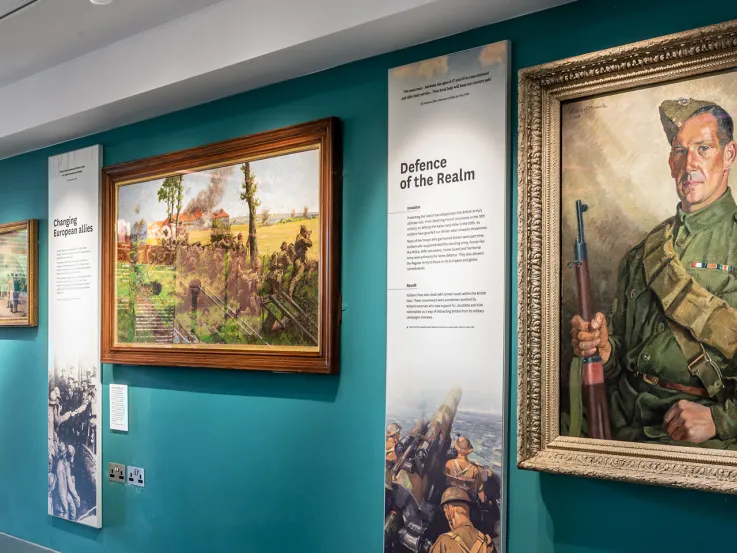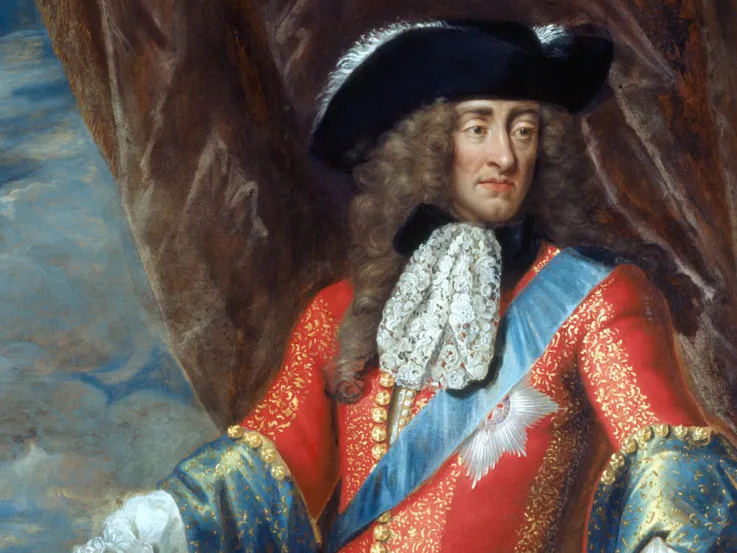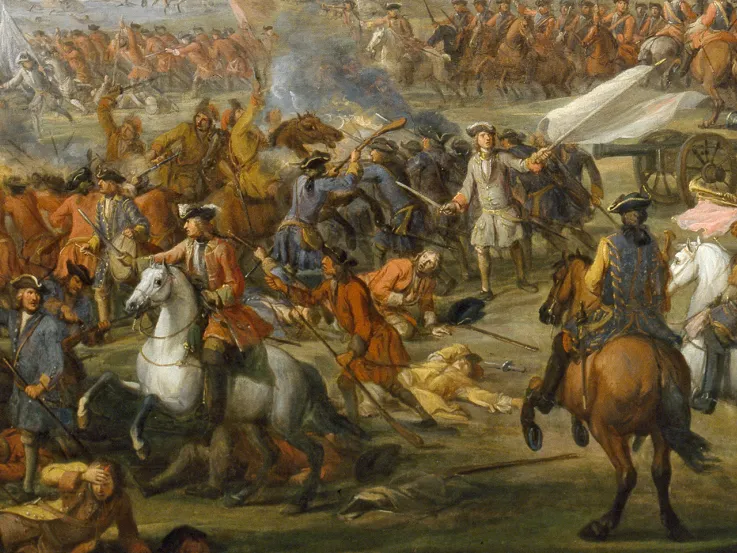The bigger picture
When King James II came to the throne in 1685, Protestants (specifically Anglicans) had a monopoly on public office. As a Roman Catholic, James was keen to secure toleration for his co-religionists. He used his power to appoint Catholics to senior military and political posts, often bypassing Parliament.
To strengthen his position, James greatly expanded the Army. He hoped to mould his new regiments into an effective force and personally supervised much of their training. But holding reviews at Hounslow Heath, so close to London, antagonised both Parliament and the public, many of whom feared a return to absolutism and Catholicism.
Aftermath
Despite the initial success of this 'Grand Review', James's reign was short-lived. His ongoing efforts to secure freedoms for Catholics, and his dismissal of Protestant officers from the Army, persuaded a small group of statesmen and soldiers to invite his son-in-law, William of Orange, to claim the throne.
The 'Glorious Revolution' of 1688 saw James flee the country and a Protestant monarchy reinstated under King William III and Queen Mary II.
See it on display
Come and see this drawing in our Formation gallery. You'll find it displayed alongside other items that demonstrate the origins of the Army and the roles it played in the 17th-century conflicts and crises that shaped Britain.







